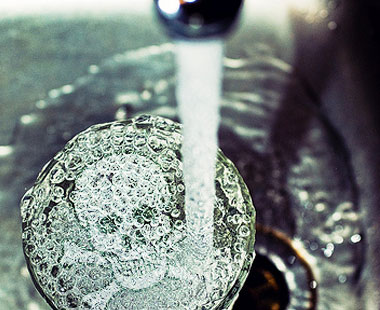A press release from the Environmental Protection Agency said that Dimock, Pa., had safe drinking water in spite of fracking. But independent testing found dangerous levels of methane. What gives?
The EPA issued a release implying that Dimock’s water was clean when only 11 samples had been tested, out of almost 50 households. The agency says that the early announcement, which Dimock residents felt was premature, was intended to keep all those concerned informed about each stage of the testing process. But it doesn’t explain why the data hasn’t been made public, or why the results don’t square with independent testing.
Independent testing has found that 11 Dimock families’ water is contaminated with explosive levels of methane, as well as heavy metals, radioactive material and fracking chemicals like ethylene glycol—commonly known as antifreeze.
It’s true that methane-contaminated water is still technically drinkable — it just might blow up your house is all. Perhaps the EPA was only concerned with reporting poisonous water, not explosive water.
Methane is not considered poisonous to drink, and therefore is not a health threat in the same way as other pollutants. But the gas can collect in confined spaces and cause deadly explosions, or smother people if they breathe too much of it. Four of the five residential water results obtained by ProPublica show methane levels exceeding Pennsylvania standards; one as high as seven times the threshold and nearly twice the EPA’s less stringent standard.
The methane detections were accompanied by ethane, another type of natural gas that experts say often signifies the methane came from deeply buried gas deposits similar to those being drilled for energy and not from natural sources near the surface.
But even then, methane isn’t the only crap that tests are turning up in Dimock’s water supply:
Among the other substances detected at low levels in Dimock’s water are a suite of chemicals known to come from some sort of hydrocarbon substance, such as diesel fuel or roofing tar. They include anthracene, fluoranthene, pyrene and benzo(a)pyrene—all substances described by a branch of the Centers for Disease Control and Prevention as cancer-causing even in very small amounts. Chromium, aluminum, lead and other metals were also detected, as were chlorides, salts, bromium and strontium, minerals that can occur naturally but are often associated with natural gas drilling.



